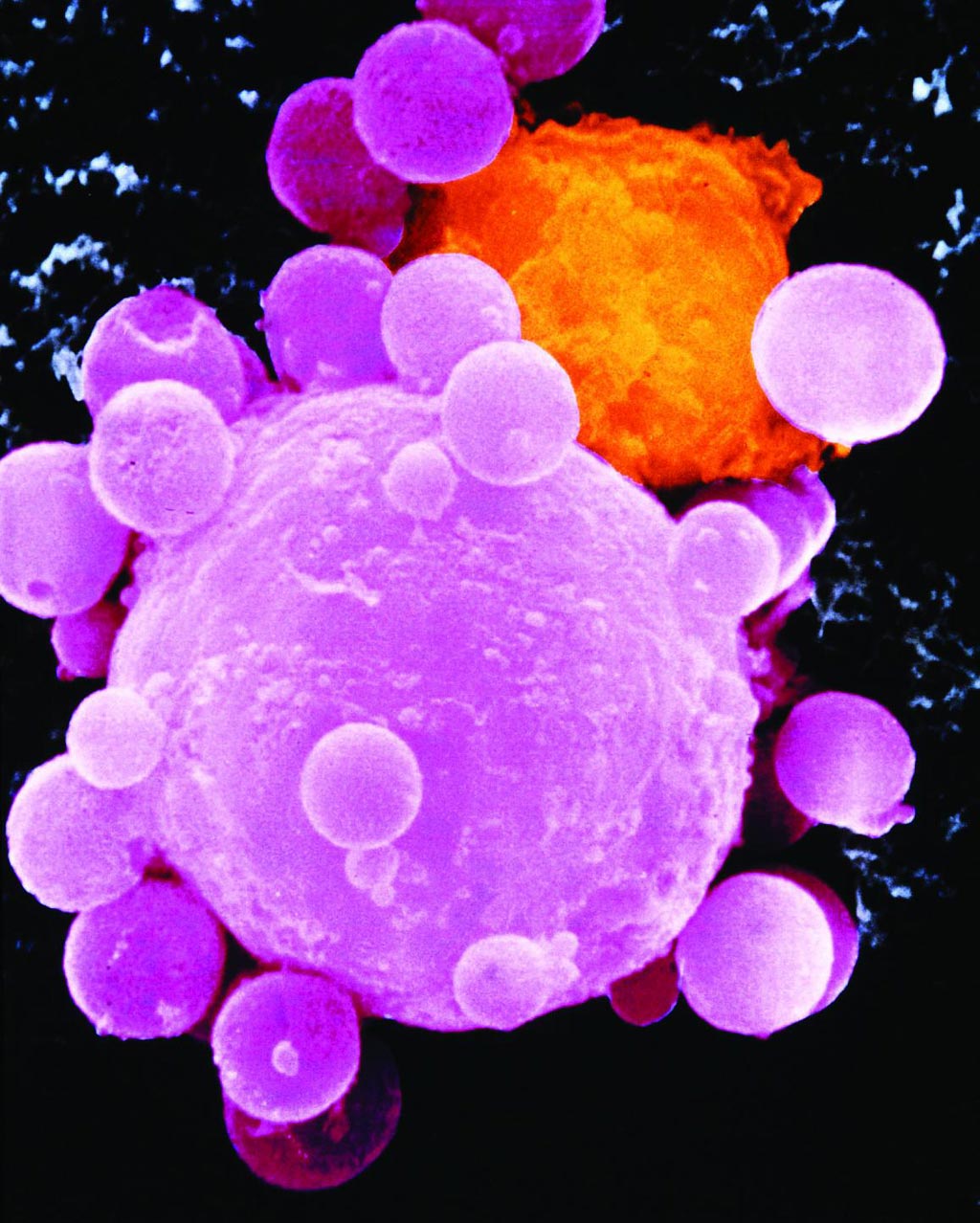Early Stage Cancer CTCs Indicators of Poor Prognosis
By LabMedica International staff writers
Posted on 12 Sep 2017
By testing blood from a pulmonary vein near the site of a lung tumor rather than from a peripheral vein, cancer researchers found that the presence of circulating tumor cells (CTCs) in the blood during early stages of the disease was indicative of a poor prognosis for the patient.Posted on 12 Sep 2017
Due to the limited CTC numbers in peripheral blood in early stages, investigators at the University of Michigan (Ann Arbor, USA) examined the CTCs in pulmonary vein blood accessed during surgical resection of tumors. Pulmonary vein (PV) and peripheral vein (Pe) blood specimens from patients with lung cancer were drawn during surgery and assessed for CTC burden using a microfluidic device.

Image: A colored scanning electron micrograph (SEM) of a lung cancer cell during cell division (Photo courtesy of the National Institutes of Health).
From 108 blood samples analyzed from 36 patients, PV had significantly higher number of CTCs compared to pre-operative Pe and intra-operative Pe blood. CTC clusters with large number of CTCs were observed in 50% of patients, with PV often revealing larger clusters. Long-term surveillance indicated that presence of clusters in pre-operative Pe blood predicted a trend toward poor prognosis.
Gene ontology analysis revealed enrichment of cell migration and immune-related pathways in CTC clusters, suggesting survival advantage of clusters in circulation. Clusters displayed characteristics of therapeutic resistance, indicating the aggressive nature of these cells. Thus, CTCs isolated from early stages of lung cancer were predictive of poor prognosis and could be analyzed to determine biomarkers predictive of recurrence.
"The tumors were constantly shedding cells even when they were small—that's one thing we learned," said senior author Dr. Sunitha Nagrath, professor of chemical engineering at the University of Michigan. "Although we define the tumors as early stage, already they are disseminating cells in the body. Even though you removed the tumor, you left behind these hundreds and hundreds of cells. If you know this patient walking out of the clinic is going to relapse after less than a year because of these cells, why don't we treat them now?"
The study was published in the July 17, 2017, online edition of the journal Cancer Research.
Related Links:
University of Michigan













